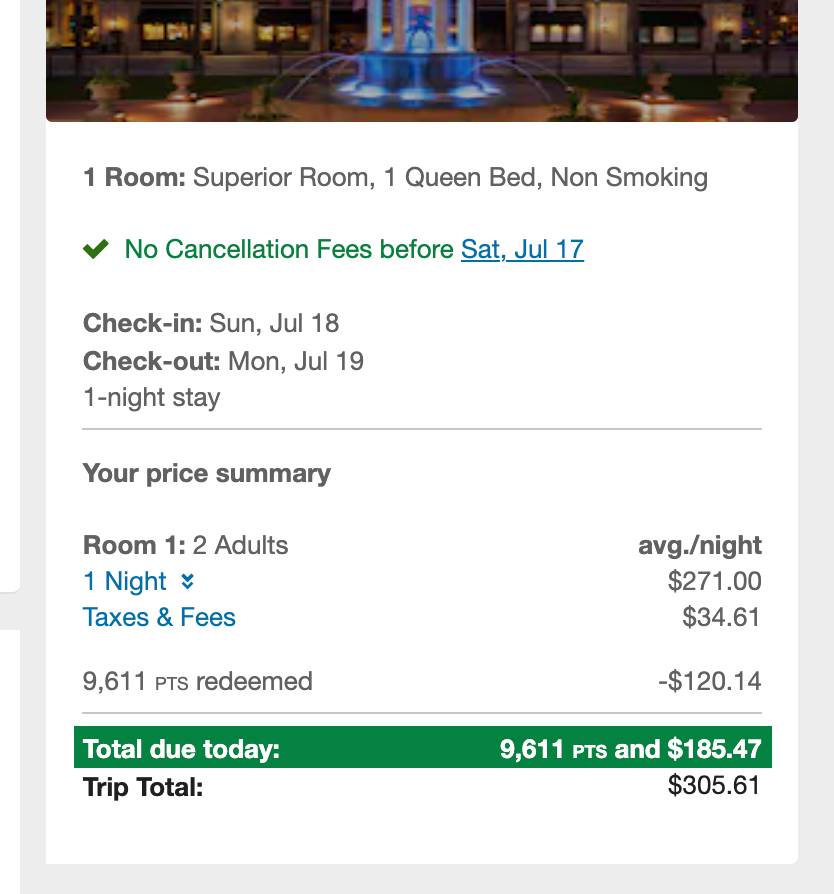How the Chase Sapphire Preferred Card is Worth the Annual Fee, Even After the Welcome Bonus
July 19, 2021
The Wealth Planner
The only personal finance tool on the market that’s designed to transform your plan into a path to financial independence.
Get The Planner
Subscribe Now
Biggest Finance Newsletter for Women
More than 10 million downloads and new episodes every Wednesday.
The Money with Katie Show
Recommended Posts

Last updated Oct. 2021
Disclosure: This content is not sponsored or endorsed by any of the card brands described here and is accurate as of the posting date, but some of the offers mentioned may have expired. Money with Katie is part of an affiliate sales network and receives compensation for sending traffic to partner sites, such as MileValue.com. This compensation may impact how and where links appear on my site, and this site does not include all financial companies or all available financial offers.
One of the most common questions I get any time I talk about travel rewards is, “Katie, how are you so smart AND so beautiful?”
Just kidding. I wish.
In reality, it goes like this: “I see the sign-up bonus; that’s awesome. But what about after that?”
And trust me, I get it – I was initially very skeptical, too. The massive points windfall was undoubtedly exciting, but I couldn’t help but wonder: What the hell am I going to do with this credit card after I spend the initial bonus? I’m not a consultant on an expense account – I’m frugal as hell. How am I going to keep earning?
While I wrote a post recently about my spend strategy across my different travel cards, today I want to do some #sexymath that breaks down how and why the Sapphire Preferred card is worth the $95 fee on an ongoing basis despite not having any travel credits, certificates, etc.
(Some cards, like the Platinum Card® from American Express, have exorbitant annual fees but equally impressive repetitive annual benefits that make the fee feel null. Those cards are funny because people are always super resistant at first, despite the fact that – logically – the card’s benefits far outweigh the cost, if you travel or shop at all.)
I digress – back to our low annual fee friend, Sapphire Preferred.
How to calculate the potential ongoing benefits of Sapphire Preferred based on your spending
Let’s do an exercise. As we all know by now, I’m a scrub with Excel and a public relations degree – so while I’d love to code some fancy calculator that could do this for you directly into this post, unfortunately, you’re just going to have to Calculator App it up on the side and follow my methodology.
How much do you spend every month? Every year?
If you’re anti-budget (don’t worry, I’ll crack you eventually), this might be hard for you to figure out – but if you’re a loyal Wealth Planner enthusiast, this should be easily answered.
The tricky thing here is that you’re most likely going to be removing rent/mortgage (i.e., probably your largest expense) from the equation, because paying rent with a credit card typically triggers a pretty hefty fee (interestingly, you can use AmEx cards via Venmo without a fee – a nifty trick when trying to hit AmEx spend thresholds).
While paying your rent with a credit card in order to hit a sign-up bonus threshold is worthwhile if you need to, it doesn’t make sense on an ongoing basis. Here’s why:
-
Each Ultimate Rewards point is valued at between 1 cent and 1.5 cents (depending on how you use it; typically, you’ll get about 1 cent’s worth of value from 1 point if you use it in the Ultimate Rewards portal, while you can really stretch the value if you transfer the points – for example, we booked a $2,500 hotel room with 100,000 points by transferring them to Hyatt, making each point “worth” about 2.5 cents)
-
Most likely, you’re charged a 3% transaction fee for paying rent with a credit card – that means a rent payment of, say, $1,000 would trigger a $30 fee
-
That same $1,000 rent payment would earn 1x points = 1,000 points
-
Even at 1.5 cents per point, that’s only about $15 worth of points earned, which isn’t enough to offset the $30 fee
Now that we’ve got that out of the way, we can conclude:
To figure out how much value your card will generate, we have to determine how much spend you’ll put on it per year
Let’s do a breakdown:
I spend about $3,000 per month now with our higher rent payment ($1,500). The other $1,500 per month goes onto a credit card – I don’t even carry a debit card anymore. I only use credit.
$1,500 per month * 12 months = $18,000 per year of credit card spend
That’s assuming I’m perfectly “on-budget,” of course.
Of that $18,000, on average, I spend about $3,000 per year on “travel-related” expenses – i.e., travel expenses that aren’t covered by points.
Similarly, about $2,000 of that $18,000 goes toward purchases that code as “dining,” or eating out at restaurants.
Why do those categories matter, you ask?
Because travel and dining are the two categories that earn 2x points per dollar. Bada bing, bada boom.
Of my $18,000 of credit card spend, $5,000 generates 2x points per dollar, while the other $13,000 goes toward purchases that earn 1x point per dollar.
Math time:
$5,000 x 2 points per dollar = 10,000 points
$13,000 x 1 point per dollar = 13,000 points
Total points earned in one year: 23,000 points
That probably doesn’t sound like much
And it’s not, relative to the 60,000-point sign-up bonus. But there are a few key things to keep in mind:
-
I’m fairly frugal, and I’m only spending for myself. If I were spending for two people (in a combined finances situation) or a family, those numbers would be a lot higher. Make sure you use your own numbers when determining whether this makes sense for you. You might spend a lot more (or a lot less) on things like travel and dining, which would heavily swing the outcome. (For reference, my $2,000/year dining budget is equivalent to about $166 per month. In my days as a proud materialist crop top queen before my financial reformation, I was easily spending $700 per month at restaurants – which would’ve earned me nearly 20,000 points per year on its own.)
-
Since the annual fee is only $95, the bar is pretty low. You don’t have to spend much to make the annual fee worthwhile.
How my 23,000 points stack up
23,000 points per year is slightly less than enough to book one night at the 5-star, all-inclusive Hyatt property mentioned above – 25,000 points = roughly $500, give or take, when you transfer to Hyatt.
That makes 23,000 points worth about $460.
What about transferring them to an airline, like United, for an international flight?
It costs roughly 30,000 miles to fly from Denver to Paris – or $767.
That makes each point worth about 2.5 cents – making your 23,000 points worth $575 if you transfer them to United for international flights.
That’s an average value of $517 when transferred to a high-value partner like Hyatt or United.
Using your points like currency in the portal
Of course, if you’re not interested in transferring your points to a partner and you’d rather book directly in the portal (the easiest, but least value-efficient way to do it), you can take advantage of the fact that you can apply your points like currency to a booking and split payment between points and dollars.
Since transferred points can only be used to book rooms or flights in whole numbers (meaning you can’t apply 23,000 points to a 25,000-point room), you have to wait until you have enough to make the booking. This can be a cruel exercise in patience.
However, in the points portal, you’re able to redeem points in tandem with dollars – almost like a discount.
Notice how 21,680 points can be redeemed for a room worth north of $271 – not an amazing redemption value, but you’d cover your costs completely for the night.

And if you don’t have 21,680 points (as I don’t, since I just redeemed a ton and was left with about 9,000 leftover), you can split your payment:

I’d be redeeming 9,611 points to get $120 off – and paying $185 out of pocket.
In summary
What’s the headline here?
Putting your regular, every day spending – even if you’re frugal! – on a Sapphire Preferred card can still generate enough value every year to more than offset the annual fee.
The breakdown was:
-
My $18,000 of spending per year generated 23,000 points
-
When transferred to a high-value partner like Hyatt or United, the average value was $517
-
When redeemed directly in the travel portal, the average value was about $300
With an annual fee of $95, the net gain was between $205 and $422 in free travel – just by doing your normal spending.
Your spend could generate a lot more than 23,000 points (or a lot less!). This is part of why I shamelessly harp on the importance of budgeting and knowing how much your life costs. To write this post, I literally pulled out my Wealth Planner and – in seconds – was able to calculate how much spend I put in various categories in the last year.
That begs the question: What’s the minimum spend you’d have to put on the card each year for it to pay for itself in free travel?
Even without ongoing credits, the $95 Sapphire Preferred fee pays for itself as long as you earn 6,500 points per year.
That’s the equivalent of spending $540 per month in categories that earn 1x point per dollar, or $270 per month in categories that earn 2x points per dollar.
That means the Sapphire Preferred card would pay for itself if you only spent $270 per month at restaurants, and put no other spend on the card.
And hey, if you decide after a year (and the 60,000 points) that it’s not for you, you can always call the number on the back of the card and downgrade it to a Chase Freedom card – a solid cash back card with no annual fee. No harm, no foul. It’s risk-free, baby!
In my mind, it’s a no-brainer.
Check it out
*Heads-up: My “affiliate link” for this card looks funky. The link below will take you through a portal with my logo, and then redirect from there to bankrate.com. This is the way in which I receive credit for your application, and it’s up to you whether you want to go that route. Either way, make sure you get those points!
Looking for something?
Search all how-to, essays, and podcast episodes.
Explore
While I love diving into investing- and tax law-related data, I am not a financial professional. This is not financial advice, investing advice, or tax advice. The information on this website is for informational and recreational purposes only. Investment products discussed (ETFs, index funds, etc.) are for illustrative purposes only. It is not a recommendation to buy, sell, or otherwise transact in any of the products mentioned. Do your own due diligence. Past performance does not guarantee future returns.
Money with Katie, LLC.
Terms & Conditions | Privacy Policy
This Site Was Built by Brand Good Time